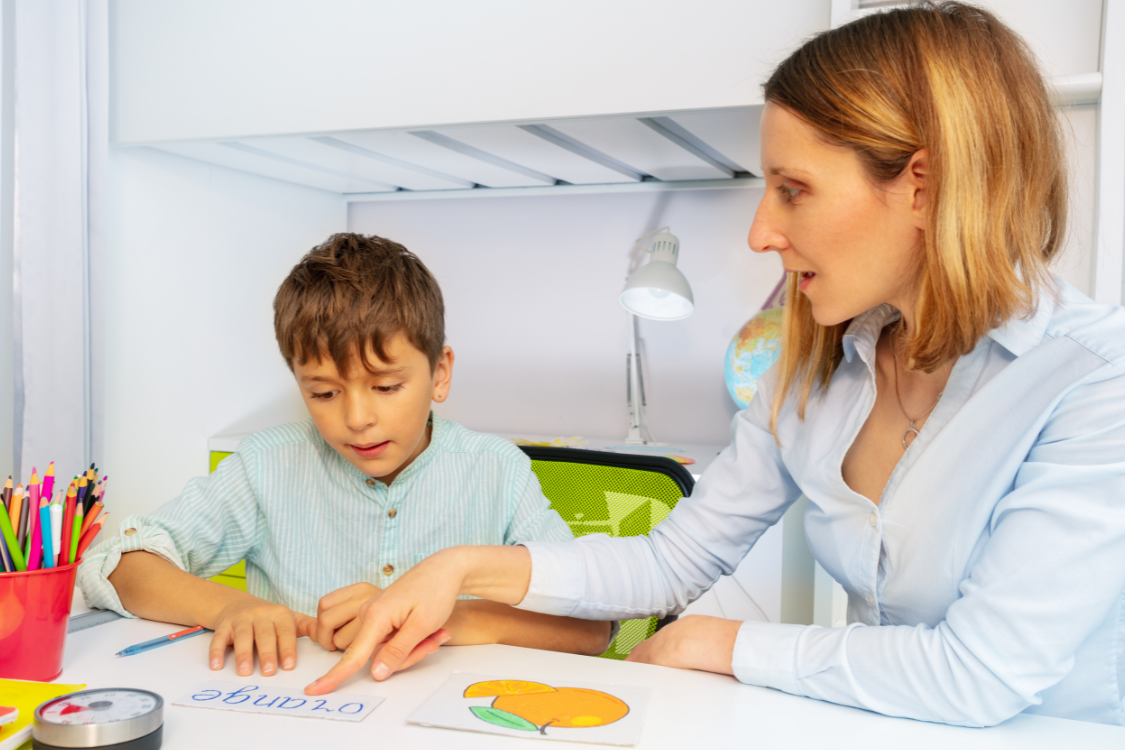For many children, learning to read flows naturally from exposure to books, letters, and sounds. But for others, the path to literacy is filled with unexpected challenges and frustrations. If you’re a parent watching your child struggle despite their intelligence and effort, you know how heartbreaking this journey can be.
The good news? Learning disabilities don’t define a child’s reading future. With the right approach—one based on the science of reading rather than trial and error—children with learning disabilities can become successful, confident readers who enjoy books just as much as their peers.
Let’s explore how the science of reading can transform the learning experience for children with three common learning disabilities, and how Reading.com’s evidence-based approach supports this vital work.
Understanding How Learning Disabilities Impact Reading
Learning disabilities affect approximately 1 in 5 children in the United States. While each child’s experience is unique, certain learning disabilities consistently impact reading development in specific ways. Here are three common learning disabilities that can affect reading acquisition:
Dyslexia: When Words Play Tricks
Dyslexia is perhaps the most well-known reading disability, affecting about 15-20% of the population. It’s characterized by difficulties with accurate word recognition, poor spelling, and challenges with decoding unfamiliar words.
Children with dyslexia often struggle to connect letters with their sounds (phonological awareness) and may find it difficult to blend sounds together to read words. They might reverse letters like ‘b’ and ‘d’ or transpose the order of letters within words.
Despite these challenges, children with dyslexia typically have strong reasoning abilities and can excel in areas like problem-solving, critical thinking, and creativity. Their reading difficulties stem not from a lack of intelligence but from differences in how their brains process language.
ADHD: When Focus Floats Away
Attention-Deficit/Hyperactivity Disorder (ADHD) affects approximately 9.4% of children. While not technically a learning disability, ADHD significantly impacts learning, especially reading acquisition.
Children with ADHD may struggle to:
- Sustain attention during reading activities
- Stay focused on a text long enough to comprehend it
- Filter out distractions while reading
- Organize their thoughts about what they’ve read
- Hold information in working memory while processing new content
These challenges can make reading a frustrating experience, leading some children with ADHD to avoid reading altogether, further delaying their skill development.
Language Disorders: When Words Don’t Make Sense
Developmental Language Disorder (DLD) and related conditions affect approximately 7% of children. These disorders impact a child’s ability to understand and use language effectively, creating significant hurdles for reading development.
Children with language disorders might struggle with:
- Understanding the meaning of words and sentences
- Processing complex language structures
- Remembering verbal information
- Following multi-step directions
- Expressing thoughts and ideas clearly
Since reading is fundamentally a language-based activity, these challenges create barriers at every stage of literacy development, from early phonological awareness to advanced reading comprehension.
How the Science of Reading Transforms Learning for All Children
The science of reading is a body of evidence about how people learn to read, based on decades of research across multiple disciplines. This research reveals that regardless of how a child’s brain is wired, certain instructional approaches are more effective than others for building reading skills.
Here’s how the science of reading specifically addresses the needs of children with learning disabilities:
Explicit, Systematic Instruction
Traditional reading instruction often relies on incidental learning—the assumption that children will naturally pick up reading skills through exposure to text. This approach fails many children, but it’s particularly ineffective for those with learning disabilities.
The science of reading advocates for explicit, systematic instruction in all components of reading:
- Phonological awareness (recognizing and manipulating sounds in words)
- Phonics (connecting sounds to letters)
- Fluency (reading accurately, with appropriate speed and expression)
- Vocabulary (understanding word meanings)
- Comprehension (understanding what is read)
This structured approach ensures that no crucial skills are left to chance—a game-changer for children who don’t naturally infer reading patterns on their own.
Multisensory Learning Experiences
Children with learning disabilities often benefit tremendously from multisensory instruction that engages multiple learning pathways simultaneously. The science of reading embraces this approach, incorporating:
- Visual elements (seeing letters and words)
- Auditory components (hearing sounds and words)
- Kinesthetic activities (forming letters with the body or manipulatives)
- Tactile experiences (tracing letters in sand or with textured materials)
These multisensory experiences create multiple neural pathways for learning, providing alternative routes to literacy for children whose typical pathways may be less efficient.
Cumulative Practice and Review
Children with learning disabilities often require more practice and review than their peers to master reading skills. The science of reading incorporates:
- Distributed practice (spreading learning over time)
- Cumulative review (regularly revisiting previously taught skills)
- Varied practice contexts (applying skills in different situations)
This thoughtful approach to practice ensures that skills are truly mastered and retained, not just temporarily memorized for a test.
Reading.com’s Approach: Supporting All Learners
At Reading.com, we’ve built our program on the science of reading, creating an approach that works for all children, including those with learning disabilities. Here’s how our methods specifically support children facing reading challenges:
For Children with Dyslexia
Our program addresses the core phonological processing challenges of dyslexia through:
Intensive Phonological Awareness Training
We begin by developing children’s ability to hear, identify, and manipulate the sounds in spoken language—the foundation for connecting sounds to letters. Our activities build skills progressively, from larger sound units (words, syllables) to smaller ones (individual phonemes).
Systematic, Explicit Phonics Instruction
Rather than expecting children to intuit letter-sound relationships, we teach these connections directly and systematically. Each new pattern builds on previously mastered skills, creating a strong foundation for reading unfamiliar words.
Structured Word Analysis
We teach children to break words into manageable parts (prefixes, roots, suffixes) and to recognize common spelling patterns. These strategies help dyslexic readers tackle longer words without becoming overwhelmed.
For Children with ADHD
Our program supports children with attention challenges through:
Engaging, Interactive Lessons
We keep learning sessions brief and highly interactive, incorporating movement, visuals, and hands-on activities that maintain attention and increase engagement.
Clear, Predictable Routines
Our consistent lesson structure helps children know what to expect, reducing cognitive load and helping them focus their attention on learning rather than figuring out what comes next.
Built-In Success Opportunities
We design activities with achievable challenges that provide regular success experiences, building the confidence and motivation that help children persist through attention difficulties.
For Children with Language Disorders
Our program supports children with language processing challenges through:
Vocabulary-Rich Instruction
We explicitly teach word meanings alongside reading skills, building the vocabulary knowledge essential for comprehension. New words are introduced in meaningful contexts and revisited frequently to ensure retention.
Scaffolded Comprehension Strategies
We teach specific strategies for understanding text, breaking the complex process of comprehension into manageable steps that support children with language processing difficulties.
Visual Supports
Our lessons incorporate visual cues, graphic organizers, and other non-verbal supports that help children process and organize language information more effectively.
Work With Your Child at Home: Practical Strategies
Parents play a crucial role in supporting children with learning disabilities. Here are some practical strategies to enhance your child’s reading development:
Create a Distraction-Free Reading Environment
Minimize background noise, visual clutter, and interruptions during reading time. Some children benefit from simple accommodations like a reading corner with reduced visual stimulation or noise-canceling headphones.
Respect Your Child’s Optimal Learning Times
Notice when your child is most alert and receptive to learning. Schedule reading practice during these optimal windows rather than forcing it when they’re tired or overwhelmed.
Celebrate Progress, Not Perfection
Learning to read with a disability takes time and tremendous effort. Acknowledge and celebrate small victories along the way, reinforcing your child’s persistence and growth mindset.
Be Their Biggest Advocate
Stay informed about your child’s rights in educational settings and advocate for evidence-based instruction. Share what works at home with teachers, and vice versa, to create a consistent approach across environments.
Maintain the Joy of Reading
Even when reading skills are developing slowly, keep the connection to reading joy alive by reading interesting material to your child daily. This builds vocabulary, comprehension, and the motivation to become an independent reader.
The Reading.com Difference: Science-Based Support for Every Child
At Reading.com, we believe every child can learn to read with the right support—regardless of how their brain is wired. Our approach is:
Personalized
We recognize that children with learning disabilities have unique strengths and challenges. Our program is easily adaptable to meet individual needs, providing targeted support where it’s needed most.
Progressive
We build skills systematically, ensuring mastery of foundational concepts before introducing more advanced ones. This structured progression is especially crucial for children with learning disabilities.
Positive
We create a positive learning environment that builds confidence alongside skills. For children who have experienced reading failure, this positive approach is essential for rebuilding their belief in themselves as learners.
Proven
Everything we do is grounded in the science of reading—research that has consistently shown what works for all children, including those with learning disabilities.
A New Chapter in Your Child’s Reading Journey
Learning disabilities present real challenges, but they don’t have to determine your child’s reading future. With approaches based firmly in the science of reading, children with dyslexia, ADHD, language disorders, and other learning differences can develop into confident, capable readers.
At Reading.com, we’re committed to making this possible for every child through our evidence-based, personalized approach to reading instruction. We combine the most effective teaching methods with engaging activities that build skills progressively, creating a learning experience that works with—not against—your child’s unique brain wiring.
Ready to start a new chapter in your child’s reading journey? Begin your free 7-day trial of the Reading.com app today and discover how our science-based approach can transform reading challenges into reading success.





